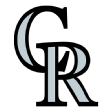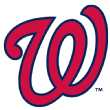9. Dallas Mavericks

Dennis Smith
NC State
Freshman
Guard

Other potential draftees: Jonathan Isaac, Frank Ntilikina, Lauri Markkanen, Zach Collins
The Mavs covet Isaac and have been trying to move up a couple of spots to grab him. So far, they've been unable to work out a deal.
The Mavs were strongly leaning toward Ntilikina, to the point that they invited his head coach at Strasbourg, Vincent Collet, to come coach the Mavs' Orlando Summer League team. However, they walked away from a workout with Smith last week totally smitten by Smith's athleticism and scoring abilities.
If both are on the board, this becomes a really tough decision between getting the best player now and potentially the best player in three years. Dallas hasn't had to be patient for a while. Can it?
There's also talk of the Mavs swapping picks with the Wolves, but right now the cost is too high for Dallas.
10. Sacramento Kings (via Pelicans)

Zach Collins
Gonzaga
Freshman
Center

Other potential draftees: John Collins, Malik Monk, Harry Giles
The Kings' other major need is at small forward. With Rudy Gay planning to opt out, they have a major hole there. The problem is that there just aren't any small forwards available who are worth taking this high.
Collins is an athletic rim-protector who can also stretch the floor. They have a number of bigs with Skal Labissiere, Willie Cauley-Stein and Georgios Papagiannis already on the roster, but Collins' talent is worth a selection here.
The other two dark horses for this spot in Sacramento are Wake Forest's John Collins and Duke's Harry Giles. A lot of scouts are split on these three bigs.
Monk's elite shooting ability and value here also make him tempting -- and De'Aaron Fox has been pushing for a reunion with his teammate, if Fox goes No. 5.
It's also worth noting that a number of teams are trying to trade for this pick from the Kings, including the Lakers, Spurs and Knicks.
11. Charlotte Hornets

Malik Monk
Kentucky
Freshman
Guard

Other potential draftees: Donovan Mitchell, Luke Kennard
The Hornets traded for Dwight Howard on Tuesday, shoring up their frontcourt. Look for them to try to address their backcourt in the draft.
Monk's elite shooting ability and athleticism give him a leg up over the other two 2-guards who could go ahead of him. Mitchell's elite length and defensive abilities are his biggest strengths.
Kennard is every bit as good a shooter as Monk and might be a better playmaker, but he's not nearly the athlete the other two players are.
12. Detroit Pistons

Luke Kennard
Duke
Sophomore
Guard

Other potential draftees: Zach Collins, Donovan Mitchell, John Collins, Harry Giles
Kennard is getting interest as high as No. 8 to the Knicks, No. 10 to the Kings and No. 11 to the Hornets. The Lakers have also been looking at possibly picking up another pick or trading down to get him along with other pieces.
I think this would be his floor. The Pistons need shooting, and Kennard might be the best shooter in the draft.
13. Denver Nuggets

OG Anunoby
Indiana
Sophomore
Forward

Other potential draftees: Zach Collins, John Collins, Harry Giles
Teams are a bit divided when it comes to Anunoby's recovery from a January ACL tear. Some see zero problems and feel he's well on his way to a full recovery some time this winter. Others feel it could be longer.
Either way, the Nuggets can afford to be patient. Picking Anunoby isn't about the coming season, it's about the future, and he gives head coach Mike Malone the best 3-and-D player in the draft.
John Collins and Giles are other strong possibilities at No. 13.
14. Miami Heat

Donovan Mitchell
Louisville
Sophomore
Guard

Other potential draftees: Zach Collins, John Collins, Luke Kennard, Harry Giles
Mitchell is a hot name right now and has drawn serious interest even from teams in the top 10. However, it's also very plausible that he slides a few spots to Miami. His combination of length, athleticism and offensive and defensive versatility is a major appeal.
The Heat are also eyeing several players to pair in the frontcourt with Hassan Whiteside. Zach Collins, John Collins and Harry Giles are the three strongest contenders at this point.
15. Portland Trail Blazers

Harry Giles
Duke
Freshman
Forward

Other potential draftees: John Collins, OG Anunoby, Edrice Adebayo
No one can pinpoint exactly where Giles' reward outweighs the very real medical risks he poses. But a number of GMs have told me their medical staffs are comfortable with his knees and aren't red-flagging him.
He has been impressive in workouts. He has elite length, athleticism and a motor. He might never live up to the hype he generated in high school, but there are few players in this draft with his potential. No. 15 seems like the right spot to swing for the fences, especially when the Blazers have two other picks.
16. Chicago Bulls

John Collins
Wake Forest
Sophomore
Forward

Other potential draftees: Harry Giles, Jarrett Allen, Ike Anigbogu
Collins is a bit of a polarizing prospect. Some see a young, skilled big man who can score in the paint and rebound. He also has an emerging perimeter game. Others see a short-armed, old-school power forward who didn't show many signs at Wake Forest of being the stretch-4 the NBA covets. He's definitely an eye-of-the-beholder-type player, but he should be a good fit in Chicago.
One other note on the Bulls: They are eyeing several potential Jimmy Butler trades that would give them a lottery pick between Nos. 3-7. Sources say they are very high on De'Aaron Fox if they get a pick from the Celtics or Suns. I don't think he'll be there at No. 7, and they might have to settle on either Dennis Smith or Frank Ntilikina if they trade up.
17. Milwaukee Bucks

Edrice Adebayo
Kentucky
Freshman
Forward

Other potential draftees: Harry Giles, Justin Patton, Jarrett Allen
A shake-up in the Bucks' front office has everyone guessing about what new GM Jon Horst is going to do at No. 17. There was a growing consensus before he got the job that if Adebayo was on the board, they'd bite. He was a bit disappointing at Kentucky, but his athleticism, lateral quickness and NBA body are all major selling points.
I also hear that this is the floor for Harry Giles if he's still on the board.
18. Indiana Pacers

Ike Anigbogu
UCLA
Freshman
Center

Other potential draftees: Edrice Adebayo, TJ Leaf
The Pacers seem high on Adebayo, but he might not make it to No. 18. If he's gone, they can go with another young, super-athletic big man in Anigbogu.
He's even more raw than Adebayo but plays with more toughness, and he's also a better shot-blocker. Concerns about a meniscus tear at the start of his season at UCLA has given some teams pause about drafting him this high. However, other teams seem much less wary.

Dennis Smith
NC State
Freshman
Guard

Other potential draftees: Jonathan Isaac, Frank Ntilikina, Lauri Markkanen, Zach Collins
The Mavs covet Isaac and have been trying to move up a couple of spots to grab him. So far, they've been unable to work out a deal.
The Mavs were strongly leaning toward Ntilikina, to the point that they invited his head coach at Strasbourg, Vincent Collet, to come coach the Mavs' Orlando Summer League team. However, they walked away from a workout with Smith last week totally smitten by Smith's athleticism and scoring abilities.
If both are on the board, this becomes a really tough decision between getting the best player now and potentially the best player in three years. Dallas hasn't had to be patient for a while. Can it?
There's also talk of the Mavs swapping picks with the Wolves, but right now the cost is too high for Dallas.
10. Sacramento Kings (via Pelicans)

Zach Collins
Gonzaga
Freshman
Center

Other potential draftees: John Collins, Malik Monk, Harry Giles
The Kings' other major need is at small forward. With Rudy Gay planning to opt out, they have a major hole there. The problem is that there just aren't any small forwards available who are worth taking this high.
Collins is an athletic rim-protector who can also stretch the floor. They have a number of bigs with Skal Labissiere, Willie Cauley-Stein and Georgios Papagiannis already on the roster, but Collins' talent is worth a selection here.
The other two dark horses for this spot in Sacramento are Wake Forest's John Collins and Duke's Harry Giles. A lot of scouts are split on these three bigs.
Monk's elite shooting ability and value here also make him tempting -- and De'Aaron Fox has been pushing for a reunion with his teammate, if Fox goes No. 5.
It's also worth noting that a number of teams are trying to trade for this pick from the Kings, including the Lakers, Spurs and Knicks.
11. Charlotte Hornets

Malik Monk
Kentucky
Freshman
Guard

Other potential draftees: Donovan Mitchell, Luke Kennard
The Hornets traded for Dwight Howard on Tuesday, shoring up their frontcourt. Look for them to try to address their backcourt in the draft.
Monk's elite shooting ability and athleticism give him a leg up over the other two 2-guards who could go ahead of him. Mitchell's elite length and defensive abilities are his biggest strengths.
Kennard is every bit as good a shooter as Monk and might be a better playmaker, but he's not nearly the athlete the other two players are.
12. Detroit Pistons

Luke Kennard
Duke
Sophomore
Guard

Other potential draftees: Zach Collins, Donovan Mitchell, John Collins, Harry Giles
Kennard is getting interest as high as No. 8 to the Knicks, No. 10 to the Kings and No. 11 to the Hornets. The Lakers have also been looking at possibly picking up another pick or trading down to get him along with other pieces.
I think this would be his floor. The Pistons need shooting, and Kennard might be the best shooter in the draft.
13. Denver Nuggets

OG Anunoby
Indiana
Sophomore
Forward

Other potential draftees: Zach Collins, John Collins, Harry Giles
Teams are a bit divided when it comes to Anunoby's recovery from a January ACL tear. Some see zero problems and feel he's well on his way to a full recovery some time this winter. Others feel it could be longer.
Either way, the Nuggets can afford to be patient. Picking Anunoby isn't about the coming season, it's about the future, and he gives head coach Mike Malone the best 3-and-D player in the draft.
John Collins and Giles are other strong possibilities at No. 13.
14. Miami Heat

Donovan Mitchell
Louisville
Sophomore
Guard

Other potential draftees: Zach Collins, John Collins, Luke Kennard, Harry Giles
Mitchell is a hot name right now and has drawn serious interest even from teams in the top 10. However, it's also very plausible that he slides a few spots to Miami. His combination of length, athleticism and offensive and defensive versatility is a major appeal.
The Heat are also eyeing several players to pair in the frontcourt with Hassan Whiteside. Zach Collins, John Collins and Harry Giles are the three strongest contenders at this point.
15. Portland Trail Blazers

Harry Giles
Duke
Freshman
Forward

Other potential draftees: John Collins, OG Anunoby, Edrice Adebayo
No one can pinpoint exactly where Giles' reward outweighs the very real medical risks he poses. But a number of GMs have told me their medical staffs are comfortable with his knees and aren't red-flagging him.
He has been impressive in workouts. He has elite length, athleticism and a motor. He might never live up to the hype he generated in high school, but there are few players in this draft with his potential. No. 15 seems like the right spot to swing for the fences, especially when the Blazers have two other picks.
16. Chicago Bulls

John Collins
Wake Forest
Sophomore
Forward

Other potential draftees: Harry Giles, Jarrett Allen, Ike Anigbogu
Collins is a bit of a polarizing prospect. Some see a young, skilled big man who can score in the paint and rebound. He also has an emerging perimeter game. Others see a short-armed, old-school power forward who didn't show many signs at Wake Forest of being the stretch-4 the NBA covets. He's definitely an eye-of-the-beholder-type player, but he should be a good fit in Chicago.
One other note on the Bulls: They are eyeing several potential Jimmy Butler trades that would give them a lottery pick between Nos. 3-7. Sources say they are very high on De'Aaron Fox if they get a pick from the Celtics or Suns. I don't think he'll be there at No. 7, and they might have to settle on either Dennis Smith or Frank Ntilikina if they trade up.
17. Milwaukee Bucks

Edrice Adebayo
Kentucky
Freshman
Forward

Other potential draftees: Harry Giles, Justin Patton, Jarrett Allen
A shake-up in the Bucks' front office has everyone guessing about what new GM Jon Horst is going to do at No. 17. There was a growing consensus before he got the job that if Adebayo was on the board, they'd bite. He was a bit disappointing at Kentucky, but his athleticism, lateral quickness and NBA body are all major selling points.
I also hear that this is the floor for Harry Giles if he's still on the board.
18. Indiana Pacers

Ike Anigbogu
UCLA
Freshman
Center

Other potential draftees: Edrice Adebayo, TJ Leaf
The Pacers seem high on Adebayo, but he might not make it to No. 18. If he's gone, they can go with another young, super-athletic big man in Anigbogu.
He's even more raw than Adebayo but plays with more toughness, and he's also a better shot-blocker. Concerns about a meniscus tear at the start of his season at UCLA has given some teams pause about drafting him this high. However, other teams seem much less wary.




























































